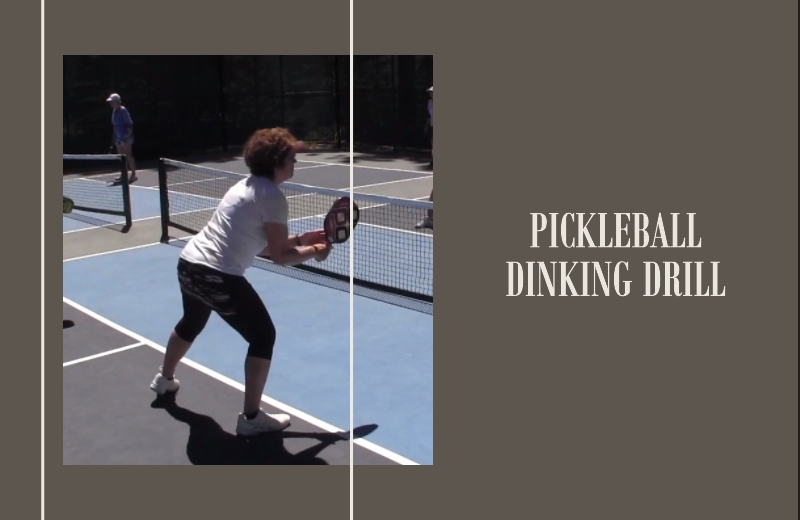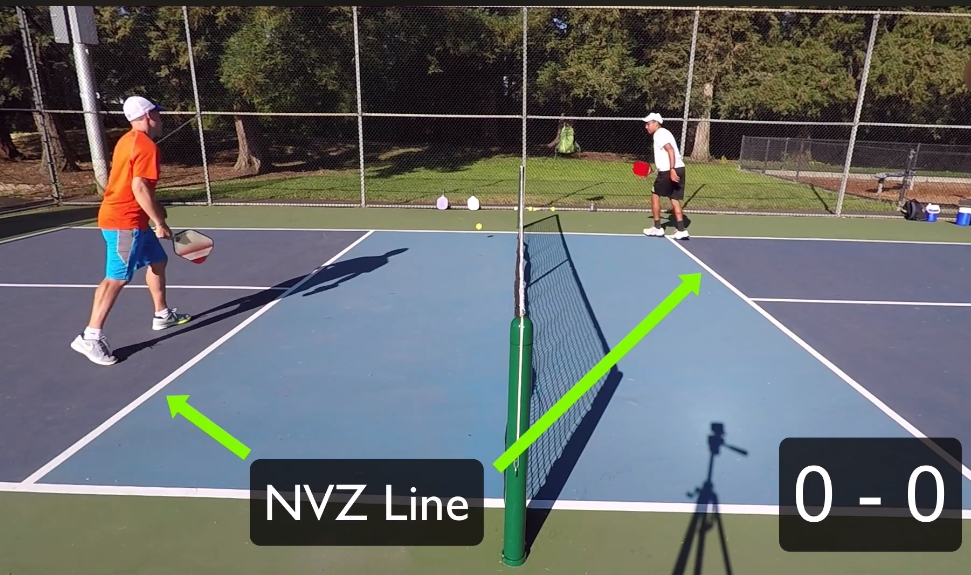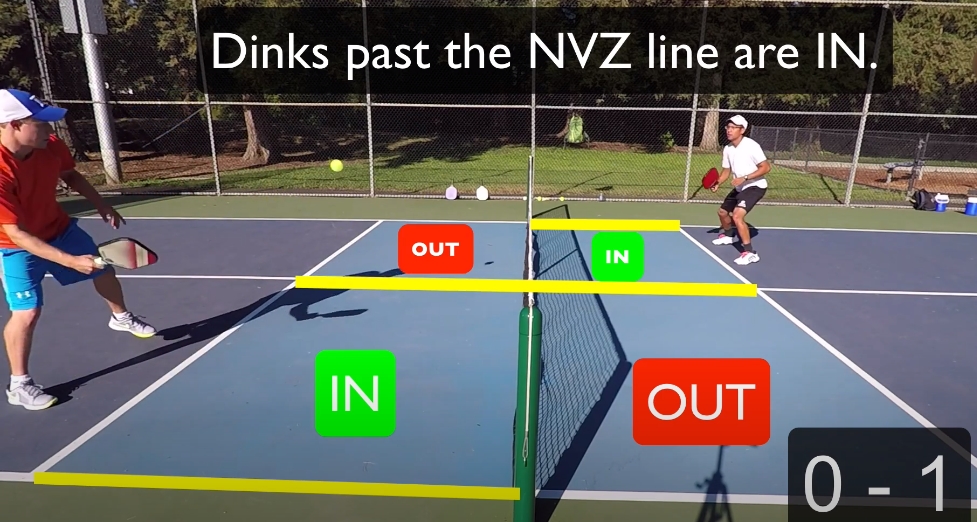- Drill 1: Maintaining Your Position – Focuses on footwork and positioning to enhance control during dinking.
- Drill 2: Toss the Ball – Helps in understanding the feel of dinking, essential for precise shots.
- Drill 3: Target Practice – Aims for precision in dinking, improving accuracy and consistency.
- Drill 4: Play a Dinking Match – Simulates real match scenarios, enhancing real-time dinking skills.
- Drill 5: Dink for Points – Adds a competitive edge to practice, making dinking more engaging and challenging.
5 Pickleball Dinking Drills to Control Your Game
There are 5 pickleball dinking drills that help you to improve your skills and win the game:
Drill 1: Maintaining Pressure and Position
Importance of footwork in dinking
Footwork plays a vital role in dinking. It’s not just about the wrist and paddle; it’s about how you position your body. Your knees should be bent, and your head should be at a low level. Proper footwork helps you maintain balance and control, allowing you to execute precise shots that land in the non-volley zone, also known as the kitchen. It’s a dance, a rhythm that you must master to become a proficient dinker.
Drill description and practice tips
Here’s a drill to help you perfect your dinking footwork:
- Stand opposite your partner on the court, on the edge of the non-volley line.
- Spend 5 minutes dinking to your partner, focusing on having the ball drop into the non-volley zone.
- Aim at their feet to make it more difficult to return.
- Keep rallies long to test your accuracy, coordination, and endurance.
For more effective practicing, try this pickleball training equipment
Drill 2: Toss the Ball
Understanding the feel of dinking
Dinking in pickleball isn’t just about hitting the ball; it’s about feeling it. The soft touch, the gentle flick of the wrist, the trajectory of the ball as it arcs over the net. It’s a delicate dance between power and control, where finesse wins over force. Understanding the feel of dinking is essential for mastering this critical skill, and it’s something that comes with time, patience, and practice.
Drill description and practice tips
Here’s a drill to help you get the feel of dinking:
- Stand close to the net with your partner on the opposite side.
- Toss the ball back and forth, aiming for a soft landing in the kitchen.
- Focus on your wrist control and the angle of your paddle.
- Experiment with backspin and topspin to see how it affects the ball’s movement.
- Repeat for 10 minutes, concentrating on the feel of the ball and the rhythm of the dink.
Drill 3: Target Practice to Improve Accuracy
Aiming for precision in dinking
Precision in dinking is a game-changer. It’s not just about getting the ball over the net; it’s about placing it exactly where you want it. Whether you’re aiming for a specific spot in the kitchen or trying to catch your opponent off guard, precision is key. It requires focus, control, and a keen understanding of angles and spin. It’s a skill that can turn a good player into a great one.
Drill description and practice tips
Here’s a drill to help you hone your precision in dinking:
- Set up targets in the kitchen area of the court.
- Stand at the non-volley line with your partner on the opposite side.
- Aim for the targets, focusing on control and accuracy.
- Experiment with different spins and trajectories.
- Switch sides to practice from different angles.
- Repeat for 15 minutes, keeping track of successful hits.
Drill 4: Play a Dinking Match to Practice Backhand
Simulating real match scenarios
In the heat of a real pickleball match, dinking becomes a strategic play, a dance of the mind and body. It’s not just about hitting the ball; it’s about reading your opponents, understanding their weaknesses, and using your dinks to create openings. Simulating real match scenarios in your practice sessions can elevate your game to the next level, giving you the confidence and skill to outmaneuver your opponents.
Drill description and practice tips
Here’s a drill to help you simulate real match scenarios:
- Pair up with a partner and stand on opposite sides of the net.
- Play a mini-match focusing only on dinking.
- Use various dinking techniques such as forehand, backhand, and topspin.
- Implement strategies like positioning and soft touch.
- Reflect on the match, identifying areas of strength and areas for improvement.
Here are a few more Pickleball Drills For Two that you and your partner can do. Take a look!
Drill 5: Dink for Points
Adding a competitive edge to dinking practice
Dinking in pickleball isn’t just about control and precision; it’s about outsmarting your opponents and winning points. By adding a competitive edge to your dinking practice, you can simulate the pressure of a real match, sharpen your focus, and enhance your ability to score crucial points.
Drill description and practice tips
Here’s a drill that will add a competitive edge to your dinking practice:
- Pair up with a partner and decide on a scoring system.
- Start a rally with only dinks allowed.
- Score points for successful dinks and penalize for errors.
- Incorporate different dinking techniques like slice, spin, and drop shots.
- Play multiple rounds, keeping track of points.
FAQs
Where do you aim dinks in pickleball?
What does opa mean in pickleball?
Where do you aim dinks in pickleball?
Conclusion
Mastering the art of dinking in pickleball takes time, patience, and consistent practice. These drills, designed to enhance your control, precision, and strategic gameplay, will guide you on your journey to becoming a dinking pro. Embrace the challenge, enjoy the process, and see your game reach new heights. Keep practicing, and never stop learning!
Related Article:
Pickleball Wall Drills: How to Practice With Wall on Your Own?
Skinny Singles Pickleball Rules: Everything You Need To Know
How To Practice Pickleball Alone | 5 Drills You Can Do By Yourself




